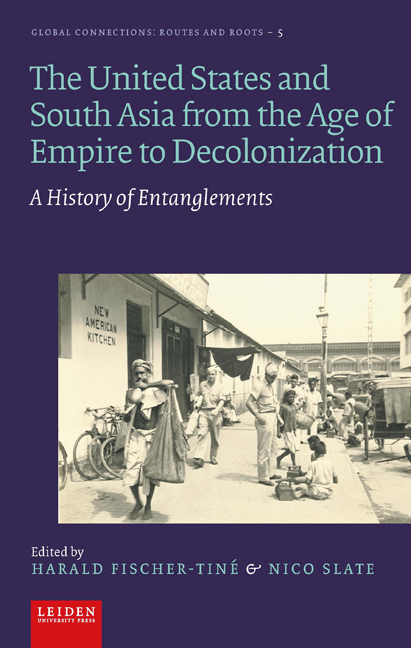52084 results in International relations and international organisations
4 - Research Design
- from Part I - Localized Peace Enforcement Theory
-
- Book:
- Local Peace, International Builders
- Published online:
- 02 January 2025
- Print publication:
- 16 January 2025, pp 75-112
-
- Chapter
-
- You have access
- Open access
- Export citation
8 - GCC Carbon Neutrality and Net Zero Policy Tracker
- from Part IV - Policy and Data Transparency
-
-
- Book:
- Carbon Neutrality in the Gulf
- Published online:
- 02 January 2025
- Print publication:
- 16 January 2025, pp 153-175
-
- Chapter
- Export citation
8 - International Peace
- from Part III - Implications for Academics and Policymakers
-
- Book:
- Local Peace, International Builders
- Published online:
- 02 January 2025
- Print publication:
- 16 January 2025, pp 169-176
-
- Chapter
-
- You have access
- Open access
- Export citation
Part IV - Policy and Data Transparency
-
- Book:
- Carbon Neutrality in the Gulf
- Published online:
- 02 January 2025
- Print publication:
- 16 January 2025, pp 151-222
-
- Chapter
- Export citation
Acknowledgments
-
- Book:
- Carbon Neutrality in the Gulf
- Published online:
- 02 January 2025
- Print publication:
- 16 January 2025, pp x-x
-
- Chapter
- Export citation
Acknowledgments
-
- Book:
- Local Peace, International Builders
- Published online:
- 02 January 2025
- Print publication:
- 16 January 2025, pp xi-xiv
-
- Chapter
-
- You have access
- Open access
- Export citation
Part II - Circular Carbon Economy and Pathway Frameworks
-
- Book:
- Carbon Neutrality in the Gulf
- Published online:
- 02 January 2025
- Print publication:
- 16 January 2025, pp 9-82
-
- Chapter
- Export citation
Ecology and Energy in Latin America
-
- Journal:
- Latin American Research Review ,
- Published online by Cambridge University Press:
- 13 January 2025, pp. 1-13
-
- Article
-
- You have access
- Open access
- HTML
- Export citation
La construcción del capitalismo académico: Negociando la reforma universitaria en Perú (2014–2023)
-
- Journal:
- Latin American Research Review ,
- Published online by Cambridge University Press:
- 13 January 2025, pp. 1-21
-
- Article
-
- You have access
- Open access
- HTML
- Export citation
Worlds Unwound, Worlds Rewoven: Latin America’s Journey from Imperial Domains to Republican Experiments, and Shifting Legal Orders
-
- Journal:
- Latin American Research Review ,
- Published online by Cambridge University Press:
- 13 January 2025, pp. 1-15
-
- Article
-
- You have access
- Open access
- HTML
- Export citation
La accidentada gestión de sonidos auténticos: Agendas intelectuales, desafíos institucionales y conexiones transnacionales en el Archivo Musical Folklórico del Perú, 1949–1952
-
- Journal:
- Latin American Research Review ,
- Published online by Cambridge University Press:
- 13 January 2025, pp. 1-23
-
- Article
-
- You have access
- Open access
- HTML
- Export citation

Trilogues
- The Democratic Secret of European Legislation
-
- Published online:
- 09 January 2025
- Print publication:
- 23 January 2025

Tip-toeing through the Tulips with Congress
- How Congressional Attention Constrains Covert Action
-
- Published online:
- 09 January 2025
- Print publication:
- 30 January 2025
-
- Element
- Export citation

The United States and South Asia from the Age of Empire to Decolonization
- A History of Entanglements
-
- Published by:
- Amsterdam University Press
- Published online:
- 07 January 2025
- Print publication:
- 06 December 2022
David Smilde, Verónica Zubillaga, and Rebecca Hanson (eds), The Paradox of Violence in Venezuela. Revolution, Crime, and Policing During Chavismo. Pittsburgh, PA: University of Pittsburgh Press. 2022. Notes, bibliography, index, 312 pp.; hardcover $55.
-
- Journal:
- Latin American Politics and Society , FirstView
- Published online by Cambridge University Press:
- 07 January 2025, pp. 1-4
-
- Article
-
- You have access
- HTML
- Export citation
Gone with the Rebels: Reshaping Local Orders in Post-Peace Agreement Colombia
-
- Journal:
- Latin American Politics and Society , FirstView
- Published online by Cambridge University Press:
- 07 January 2025, pp. 1-25
-
- Article
-
- You have access
- Open access
- HTML
- Export citation

Why the European Union Failed in Afghanistan
- Transatlantic Relations and the Return of the Taliban
-
- Published by:
- Bristol University Press
- Published online:
- 03 January 2025
- Print publication:
- 26 September 2024

A Leader-Centered Theory of Foreign Policy Change
- U. S. Foreign Policy toward Cuba under Obama
-
- Published by:
- Bristol University Press
- Published online:
- 03 January 2025
- Print publication:
- 26 July 2024

A New Cold War
- US - China Relations in the Twenty-first Century
-
- Published by:
- Bristol University Press
- Published online:
- 03 January 2025
- Print publication:
- 31 July 2024

Local Peace, International Builders
- How UN Peacekeeping Builds Peace from the Bottom Up
-
- Published online:
- 02 January 2025
- Print publication:
- 16 January 2025
-
- Book
-
- You have access
- Open access
- Export citation

